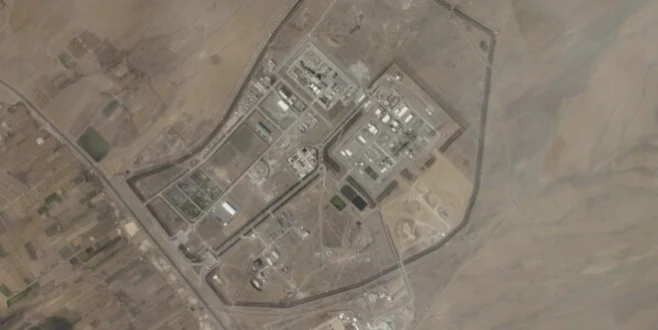Iran’s nuclear program encompasses a network of facilities integral to its uranium enrichment and nuclear energy production. These sites are central to ongoing negotiations with the United States and have been focal points in discussions about regional security and non-proliferation efforts.
Situated approximately 220 kilometers southeast of Tehran, the Natanz facility serves as Iran’s primary uranium enrichment center. Equipped with multiple cascades of centrifuges, it has been the target of cyberattacks and sabotage, including the Stuxnet virus, which disrupted operations by damaging centrifuges. Recent developments indicate that Iran is expanding the facility by constructing new underground halls within nearby mountainous terrain, potentially to house advanced centrifuges and enhance protection against aerial assaults.
Fordo Underground Facility
Located about 100 kilometers southwest of Tehran, the Fordo site is built into a mountain, providing substantial defense against potential airstrikes. Originally disclosed to international authorities in 2009, the facility has since been outfitted with advanced centrifuges and has resumed uranium enrichment activities, some reportedly reaching levels up to 60% purity. This level of enrichment significantly reduces the time required to produce weapons-grade material, raising concerns among global observers.
Bushehr Nuclear Power Plant
Iran’s sole commercial nuclear power plant, Bushehr, is situated along the Persian Gulf, approximately 750 kilometers south of Tehran. Initiated in the 1970s under the Shah’s regime, the plant’s construction was completed with Russian assistance and became operational in 2011. Fueled by Russian-supplied uranium, the facility operates under the supervision of the International Atomic Energy Agency (IAEA), with spent fuel returned to Russia to mitigate proliferation risks.
Arak Heavy Water Reactor
The Arak facility, located 250 kilometers southwest of Tehran, houses a heavy water reactor initially designed to produce plutonium as a byproduct, which could be utilized in nuclear weapons. Under the 2015 Joint Comprehensive Plan of Action (JCPOA), Iran agreed to redesign the reactor to minimize plutonium production and prevent the accumulation of weapons-grade material. Despite these modifications, the site’s potential for plutonium production remains a point of international scrutiny.
Isfahan Nuclear Technology Center
Approximately 350 kilometers southeast of Tehran, the Isfahan center is a hub for nuclear research and development. The facility includes uranium conversion capabilities and hosts research reactors, some developed in collaboration with foreign partners. It plays a critical role in Iran’s nuclear fuel cycle, contributing to both civilian energy production and scientific advancement.
Tehran Research Reactor
Located within the capital, the Tehran Research Reactor was supplied by the United States in 1967 as part of the Atoms for Peace program. Originally operating on highly enriched uranium, the reactor was later modified to use low-enriched uranium to address proliferation concerns. It is primarily used for medical isotope production and scientific research, under the oversight of the Atomic Energy Organization of Iran.
These facilities collectively represent the breadth of Iran’s nuclear capabilities and are central to international discussions aimed at ensuring the peaceful use of nuclear technology while preventing the development of nuclear weapons. Ongoing diplomatic efforts continue to address the complexities associated with Iran’s nuclear program and its implications for regional and global security.


